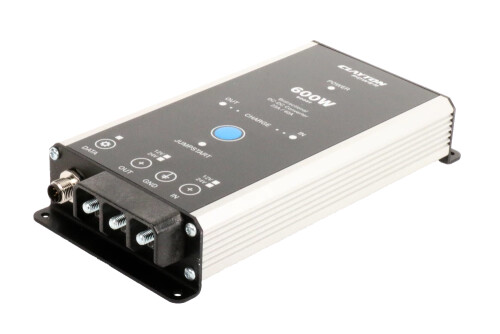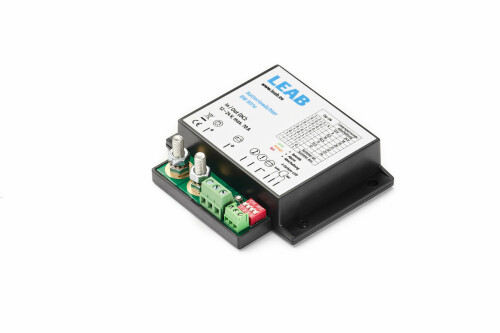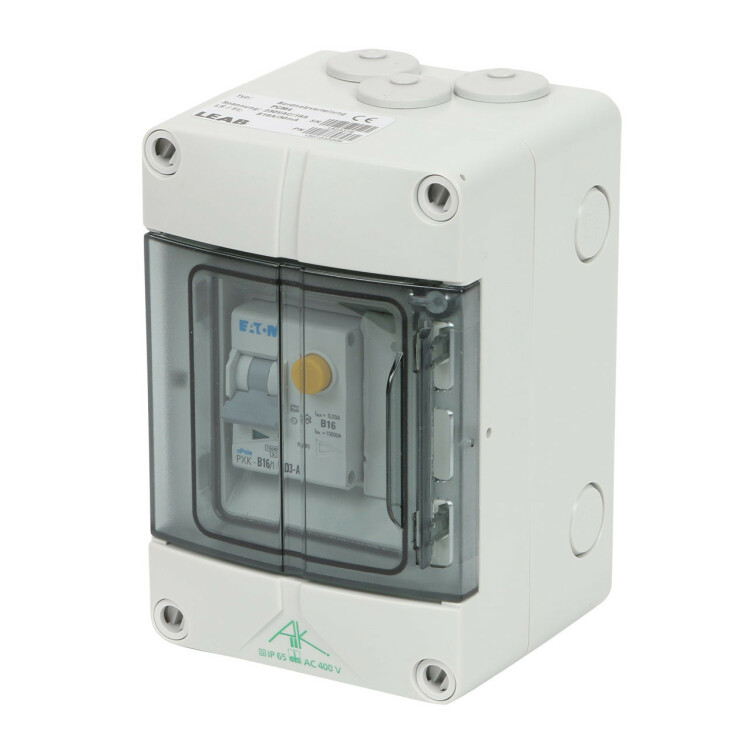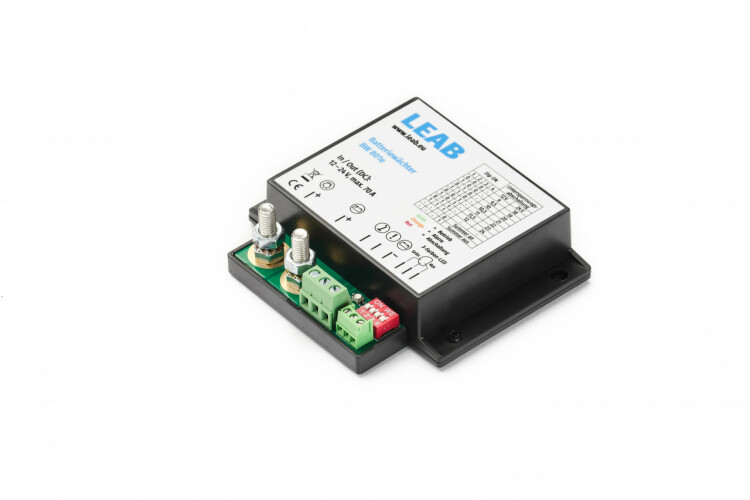
Our CLP 600 is an active charge booster for charging auxiliary batteries (lead or lithium).
The reliable and continuous mobile power supply of emergency, special and commercial vehicles is our mission. Efficient charge boosters are therefore essential products in our product portfolio. After all, in addition to the starter battery, many vehicles have auxiliary batteries to supply additional consumers with power. The task of the charge booster is to ensure that these auxiliary batteries are reliably charged.
The introduction of the Euro 6 standard in 2014 has led to manufacturers striving to save every drop of fuel that can be saved. In this way, the strict exhaust emission values can be met. The latest generation of combustion engines in the Euro 6 standard therefore resorts to a trick that can cause the unpleasant effect of empty auxiliary batteries in special vehicles.
Typically, auxiliary batteries are charged in parallel with the starter battery via an isolating relay. New vehicles with Euro 6 emission class are equipped with intelligent alternators that lower the charging voltage of the starter battery as soon as it is sufficiently (approx. 80 %) charged.
With the classic charging method in parallel connection via isolating relays, this ensures that the power supply to the body battery also comes to a standstill. Thus, if consumers such as radios, computers or measuring devices are switched on, additional batteries discharge despite the engine being running. As a result, there have been louder complaints that special vehicles that meet the Euro 6 standard are having increasing difficulties getting their auxiliary batteries reasonably charged.
The charge booster compensates for the reduction in charge voltage and ensures that the auxiliary battery is always optimally charged. This means that special vehicles in the service and rescue sector are always ready for use. But motor homes, campers and caravans can also benefit from the technology.

Our CLP 600 is an active charge booster for charging auxiliary batteries (lead or lithium).
As mentioned, a DC-DC charge booster provides a remedy. It enables a second battery to be charged while driving, in addition to the starter battery. The charge booster functions as a charger that optimally charges the connected auxiliary battery with an adjustable charging curve. If the voltage of the alternator drops due to the intelligent control of the Euro 6 vehicle, the booster adjusts the charging voltage to the ideal value according to the charging curve.
The charge booster takes energy from the starter battery and uses it to charge the auxiliary battery. When the Euro 6 vehicle notices a voltage drop in the starter battery, the alternator increases the voltage again. This ensures that both batteries are always optimally charged. The charging voltage of the alternator is therefore not lowered. Only when the auxiliary battery is also fully charged is the excitation of the alternator lowered. In order to be able to comply with the removal guidelines of all well-known manufacturers, the auxiliary battery is charged with a maximum of 40 amps. This ensures that the Euro 6 standard is met and that a vehicle does not lose its registration.
Charge boosters are also called converters or charge converters and have additional functions such as voltage monitoring of the starter battery to prevent accidental discharge when charging the auxiliary battery. They only activate automatically after the engine has been started by the D+ signal from the alternator, which provides additional protection against discharge of the starter battery.
Charge boosters are nothing other than 12 V chargers that work with the battery voltage instead of a 230 V input voltage. The charge booster is installed between the starter battery and the auxiliary battery. Furthermore, charge boosters can be adjusted to the respective type of batteries. This works for gel, AGM as well as lithium batteries.
Just like special vehicles in the service or rescue sector, motor homes usually have various additional consumers. These include devices such as kettles or battery charging stations. These are supplied with power via auxiliary batteries. To ensure that these auxiliary batteries are always reliably charged, it makes sense to install a charging booster in motor homes, campers and motorhomes.
On the consumer side, we also have a solution to protect the auxiliary batteries from unintentional discharge: Our battery watch BW 801e continuously measures the voltage of the body battery and decides whether or not it is necessary to switch off the consumers.

This BW 801e is suitable for 12 V and 24 V on-board power supplies.
The battery watch warns with a sound when a complete discharge is imminent. This creates a time window in which to react. Either consumers are switched off or the batteries are charged. If the battery level falls below a second threshold, the battery watch automatically switches off the connected loads.

Especially in emergency vehicles, on-board power distributors are predestined for the safe sub-distribution of single-phase AC voltage networks.

Thanks to the built-in solar charge controller, the Lithium Power Supply II is ideal for extending a motorhome with photovoltaic modules. It supplies travel enthusiasts with free and green electricity - even away from camping and motorhome sites.

In many cases, a deep discharge can damage the battery so that it can no longer be charged or used - a low-voltage protection can reliably prevent this.